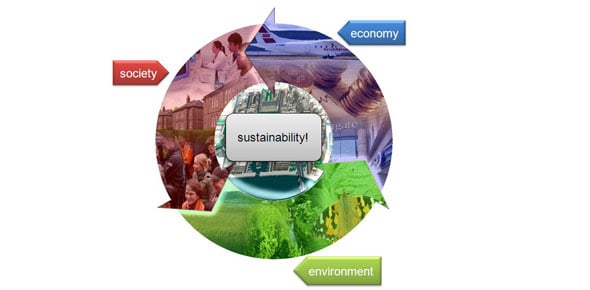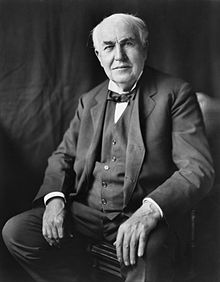The Amazing Sustainability Game Show!

Prepare yourself for the ULTIMATE QUIZ of the topic of sustainability!
- 1.
How much % of a mobile phone can be recycled?
- A.
A. 20%
- B.
B. 60%
- C.
C. 50%
- D.
D. 90%
Correct Answer
D. D. 90%Explanation
Mobile phones can be recycled to a large extent, with approximately 90% of the phone being recyclable. This includes components such as the battery, circuit boards, and certain metals and plastics. Recycling mobile phones helps to reduce electronic waste and recover valuable materials that can be reused in the production of new devices. Therefore, the correct answer is D. 90%.Rate this question:
-
- 2.
A 5 minute shower is equal to approximately how many litres of water?
- A.
A. 20- 50
- B.
B. 30-60
- C.
C. 60-100
- D.
D. 100-120
Correct Answer
C. C. 60-100Explanation
A 5-minute shower typically uses around 60-100 liters of water.Rate this question:
-
- 3.
True or False? Global warming is caused only by natural factors?
- A.
True
- B.
False
Correct Answer
B. FalseExplanation
False. Global warming is not caused only by natural factors. While natural factors such as volcanic activity and variations in solar radiation can contribute to climate change, the primary driver of global warming is human activities, particularly the burning of fossil fuels and deforestation. These activities release greenhouse gases into the atmosphere, trapping heat and causing the Earth's temperature to rise. The overwhelming scientific consensus is that human-induced factors are the main cause of global warming.Rate this question:
-
- 4.
Which country currently emits the most greenhouse gasses?
- A.
A.India
- B.
B. China
- C.
C. U.K
- D.
D. USA
Correct Answer
B. B. ChinaExplanation
China is currently the country that emits the most greenhouse gases. This is due to several factors such as its large population, rapid industrialization, and heavy reliance on coal as a primary source of energy. China's industrial sector, which includes manufacturing and construction, contributes significantly to its greenhouse gas emissions. Additionally, China is the world's largest producer and consumer of coal, which is a major contributor to carbon dioxide emissions.Rate this question:
-
- 5.
How many human deaths per year does the World Health Org attribute to climate change?
- A.
A. 150,000
- B.
B. 1.500
- C.
C. 1,500,000
- D.
D. 10, 500
Correct Answer
A. A. 150,000Explanation
The World Health Organization attributes approximately 150,000 human deaths per year to climate change.Rate this question:
-
- 6.
How long does it take for Carbon Dioxide in the atmosphere to disperse?
- A.
A. 1 yr
- B.
B. 10 yrs
- C.
C. 50 yrs
- D.
D. 100 yrs
Correct Answer
D. D. 100 yrsExplanation
Carbon dioxide (CO2) is a greenhouse gas that can remain in the atmosphere for a long time. It is estimated that it takes around 100 years for CO2 to disperse completely from the atmosphere. This is because CO2 can be absorbed by various natural processes, such as photosynthesis by plants and dissolution into the oceans. Additionally, human activities, such as burning fossil fuels, continue to release more CO2 into the atmosphere, which contributes to its long lifespan. Therefore, it takes approximately 100 years for the carbon dioxide in the atmosphere to disperse.Rate this question:
-
- 7.
During what time of the day air travel have the least damaging effect on the environment.
- A.
A. Daytime
- B.
B. Nightime
- C.
C. They are Both equally damaging
Correct Answer
A. A. DaytimeExplanation
During the daytime, air travel has the least damaging effect on the environment because sunlight helps to disperse the emissions from aircraft more effectively. Sunlight breaks down pollutants and reduces their harmful effects. Additionally, during the daytime, there is usually more air traffic, which means that the emissions are spread out over a larger area, further reducing their impact on the environment.Rate this question:
-
- 8.
Our world has an unlimited amount of natural resources.
- A.
True
- B.
False
Correct Answer
B. FalseExplanation
The statement in the question is "Our world has an unlimited amount of natural resources." The correct answer is "False" because it is not true that our world has an unlimited amount of natural resources. Natural resources are finite and limited in quantity. They include things like water, minerals, fossil fuels, and forests, which are all subject to depletion and can be exhausted if not managed sustainably. Therefore, it is important to conserve and use natural resources responsibly to ensure their availability for future generations.Rate this question:
-
- 9.
How much energy does recycling just one aluminium can save?
- A.
A. Enough to power a microwave for 30 minutes
- B.
B. Enough to power the average American home for 4 days
- C.
C. Enough to power a computer for 15 minutes
- D.
D. Enough to power a TV for 3 hours
Correct Answer
C. C. Enough to power a computer for 15 minutesExplanation
Recycling just one aluminium can can save enough energy to power a computer for 15 minutes. This is because aluminium can be recycled indefinitely without losing its quality, making it a highly sustainable material. The process of recycling aluminium requires significantly less energy compared to producing it from raw materials. Therefore, recycling aluminium cans not only conserves valuable resources but also reduces energy consumption and environmental impact.Rate this question:
-
- 10.
A typical glass bottle would take _____ years or more to decompose.
- A.
A. 20 years
- B.
B. 150 years
- C.
C. 4000 years
- D.
D. It will never break down
Correct Answer
C. C. 4000 yearsExplanation
Glass is made from sand, soda ash, and limestone, which are heated to high temperatures to form a solid material. Glass is not biodegradable and does not decompose naturally like organic materials. It can take thousands of years for glass to break down into smaller pieces due to weathering and erosion. Therefore, a typical glass bottle would take 4000 years or more to decompose.Rate this question:
-
- 11.
Items such as cell phone chargers, fans, coffeemakers, desktop printers, radios, etc. consume energy even when they are turned off?
- A.
True
- B.
False
Correct Answer
A. TrueExplanation
This statement is true because many electronic devices have standby modes or continue to draw a small amount of power even when they are turned off. This is known as standby power or vampire power. These devices are constantly using energy to maintain features like clocks, timers, or to be ready to power on quickly when turned on. To reduce energy consumption, it is recommended to unplug these devices or use power strips with on/off switches to completely cut off power when they are not in use.Rate this question:
-
- 12.
The estimated world population in the year 2050 will be about:
- A.
A. 3.4 Billion
- B.
B. 6.8 billion
- C.
C. 9.3 Billion
- D.
D. 11.5 billion
Correct Answer
C. C. 9.3 BillionExplanation
The estimated world population in the year 2050 is projected to be about 9.3 billion. This prediction is based on various factors such as current population growth rates, fertility rates, and life expectancy. The global population has been steadily increasing over the years, and it is expected to continue growing, albeit at a slower rate. Factors such as improvements in healthcare, advancements in technology, and decreasing mortality rates contribute to this projected increase in population. Therefore, option C, 9.3 billion, is the most likely estimate for the world population in 2050.Rate this question:
-
- 13.
What country consumes the most energy in the world?
- A.
A. Russia
- B.
B. China
- C.
C. U.S.A
- D.
D. Canada
Correct Answer
C. C. U.S.AExplanation
The United States consumes the most energy in the world due to its high population, large industrial sector, and high standard of living. The country has a high demand for energy to power its industries, transportation systems, and residential areas. Additionally, the United States has a significant reliance on fossil fuels, such as coal, oil, and natural gas, which contribute to its high energy consumption.Rate this question:
-
- 14.
Which of the following sources of energy is NOT renewable?
- A.
A. Petroleum
- B.
B. Hydro power
- C.
C. Biomass
- D.
D. Solar power
Correct Answer
A. A. PetroleumExplanation
Petroleum is not a renewable source of energy because it is a fossil fuel formed from the remains of ancient plants and animals. It takes millions of years for petroleum to be created, and once it is used, it cannot be replenished within a human lifetime. On the other hand, hydro power, biomass, and solar power are all renewable sources of energy as they are derived from natural processes that can be replenished over time.Rate this question:
-
- 15.
How much of the world's water is available for human use?
- A.
A. 97%
- B.
B. 23%
- C.
C. 3%
- D.
D. 1%
Correct Answer
D. D. 1%Explanation
Only 1% of the world's water is available for human use. The majority of the Earth's water is in the form of saltwater in the oceans, which is not suitable for drinking or most other human uses. The remaining freshwater is mostly locked up in glaciers, ice caps, and underground aquifers. This limited availability of freshwater highlights the importance of conservation and sustainable use of water resources.Rate this question:
-
- 16.
About how long does it take a Styrofoam cup to decompose?
- A.
A. 10 years
- B.
B. 2 months
- C.
C. 400 years
- D.
D. 150 years
Correct Answer
C. C. 400 yearsExplanation
Styrofoam is a type of plastic made from polystyrene, which is not biodegradable. It takes approximately 400 years for a Styrofoam cup to decompose. This is because the chemical bonds in Styrofoam are very strong and resistant to natural processes of degradation. As a result, Styrofoam cups can persist in the environment for centuries, contributing to pollution and harming wildlife.Rate this question:
-
- 17.
What is one way to harvest hydroelectric power?
- A.
A. Wind Turbines
- B.
B. Dams
- C.
C. Rooftop rainwater Harvesters
- D.
D. Underground Pipes
Correct Answer
B. B. DamsExplanation
One way to harvest hydroelectric power is by using dams. Dams are built to store water in a reservoir, and when the water is released, it flows through turbines, which generate electricity. This process takes advantage of the gravitational potential energy of the water, converting it into mechanical energy and then into electrical energy. Dams are a common and effective method of harnessing the power of flowing water to generate electricity on a large scale.Rate this question:
-
- 18.
Give us your opinion. How is Solar Power made?
- 19.
Who invented the light Bulb?
- A.
A. Ben Franklin
- B.
B. Thomas Edison
- C.
C. Oliver Evans
- D.
D. Nikola Tesla
Correct Answer
B. B. Thomas EdisonExplanation
Thomas Edison is credited with inventing the light bulb. He improved upon previous designs and created a practical and commercially viable version of the incandescent light bulb. Edison's bulb used a carbon filament and a low-pressure gas inside the bulb to produce light. His invention revolutionized the way we illuminate our homes and paved the way for the modern electric lighting industry.Rate this question:
-
Quiz Review Timeline +
Our quizzes are rigorously reviewed, monitored and continuously updated by our expert board to maintain accuracy, relevance, and timeliness.
-
Current Version
-
Mar 22, 2023Quiz Edited by
ProProfs Editorial Team -
Sep 16, 2012Quiz Created by
Adidas002
 Back to top
Back to top






